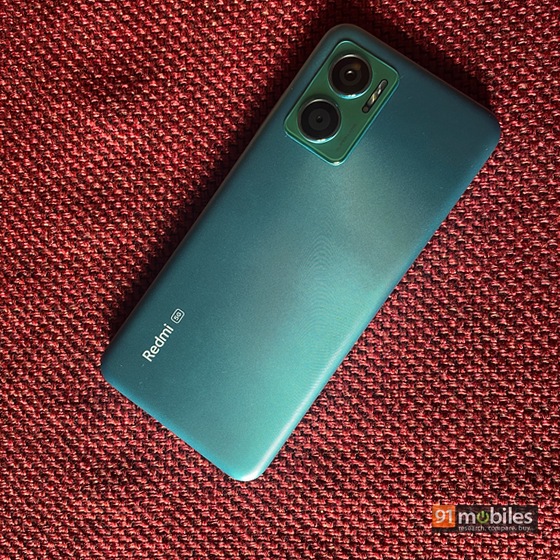[ad_1]

The Indian market is all set to get a taste of 5G services from October 1. Over the past few years, the smartphone space has been constantly flooded with 5G-capable devices. In fact, according to a recent report by Counterpoint, 5G smartphones accounted for nearly one-third of all shipments in Q2 2022. Present in a variety of price brackets, getting a 5G handset today isn’t easy. At the same time, prospective buyers may be overwhelmed by the abundance of options available to them.
But, don’t worry – today, I’ll be highlighting some of the best budget-friendly 5G smartphones on the market. I narrowed the list down to three devices Redmi 11 Prime 5G (Review), iQOO Z6 Lite 5G (Review) yet Realme 9i 5G (Review) I think they have the potential to bring buyers to their doorsteps. All three devices are priced at just Rs. Less than 15,000, in this comparison, let’s try to figure out which 5G capable device suits you best.
5G bands are supported

Among the three devices, the Redmi 11 Prime 5G supports the most bands for 5G New Radio (NR). These include seven stand-alone (SA) bands and four non-stand-alone bands (NSA). For the uninitiated, SA bands represent true end-to-end 5G networks, while NSA bands piggybank on existing 4G towers.
In terms of network strength, Redmi 11 Prime 5G supports the low frequency 700Mhz n28 band, which can penetrate urban infrastructure more efficiently. Additionally, the device also supports n1, n3, n5, n8 and n40 bands. There is also support for the n78 band, which operates on the 3.5GHz network frequency and can theoretically deliver speeds of 1GB/s. iQOO Z6 Lite has only two SA bands n77/n78 and no support for lower frequency bands. Realme 9i 5G comes second with six SA bands and three NSA bands. As things stand, in terms of sheer connectivity, the Redmi 11 Prime 5G is the better choice among the three phones.
Winner: Redmi 11 Prime 5G
Design and build

All the phones have a standard polycarbonate build with the Redmi 11 Prime 5G and iQOO Z6 Lite 5G and have an almost identical design. The Realme 9i 5G has a more glossy finish, which makes it a huge fingerprint magnet. However, I love how the camera housing is flush with the frame, with only the cameras protruding slightly.
For utility purposes, all phones feature a side-mounted fingerprint sensor, single-firing bottom speaker, USB Type-C port at the bottom and dual-SIM connectivity. The Redmi 11 Prime 5G also has an additional IR blaster that lets you control a certain number of home appliances. However, it loses points for placing the headphone jack in an unusual position at the top. This round is a tie between three phones.
Winner: Tie
Cameras

As for cameras, all three phones have a 50MP primary shooter, the 11 Prime 5G has an additional 2MP depth sensor, and the iQOO Z6 Lite 5G gets a 2MP macro shooter in its place. The Realme 9i 5G has two sensors along with the main snapper that make up its triple lens setup. All the phones click very similar shots in daylight, but the Redmi 11 Prime 5G struggles more in low-light conditions compared to the other two competitors.
Realme 9i 5G has the advantage of shooting macro and portrait shots. However, the phone packs a lower resolution 8MP selfie camera compared to the 16MP selfie cameras on the other two. Analyzing photos from all three devices, I have to conclude that the Realme 9i 5G takes marginally better shots and therefore wins this round.
Winner: Realme 9i 5G
presentation

Talking about the display, you get a 6.6-inch LCD panel with a waterdrop notch on all three phones. While the resolution on all three phones’ displays is FHD+, the iQOO Z6 Lite comes out on top as the handset’s panel refreshes at 120Hz as opposed to 90Hz on the Redmi 11 Prime 5G and Realme 9i 5G. Brightness levels on all three smartphones are almost the same at 400nits and all three have WideWine L1 certification. Also, iQOO Z6 Lite takes on this competition.
Winner: iQOO Z6 Lite
presentation

Performance-wise, the Realme 9i 5G has better processing capabilities than the competition, with MediaTek’s Dimension 810 SoC powering the phone. The Redmi 11 Prime 5G runs on the lower-end Dimension 700 platform, while the iQOO Z6 Lite has the newly launched Qualcomm Snapdragon 4 Gen 1 chipset. A look at the Antutu scores reaffirms the Realme 9i’s performance metrics.
In fact, the device netted the highest score and got 400,256 points in the benchmark. In comparison, the iQOO Z6 Lite and Redmi 11 Prime managed 385,019 and 340,756 points respectively. Switch the page to Gaming and you’ll get a similar result. In fact, the Realme 9i can run PUBG is a new state At 60fps for longer than Redmi 11 Prime and Z6 Lite. All devices have a maximum of 6GB of RAM and 128GB of internal storage. This round is taken by the Realme 9i 5G.
Winner: Realme 9i 5G
Battery

Powering all three devices is a 5,000mAh battery, which, incidentally, can juice up at 18W across all three phones. However, the iQOO Z6 Lite is the only phone that doesn’t come with a charger inside the box. Comparing the PCMark scores, the Redmi 11 Prime 5G scores 20h 6m while the Z6 Lite and Realme 9i’s numbers are 19h 9m and 15h 58m respectively. Redmi 11 Prime 5G takes this round.
Winner: Redmi 11 Prime 5G
Final judgment
From these comparisons, we can see that the Realme 9i and Redmi 11 Prime 5G are tied for both wins, while the iQOO Z6 Lite wins in the display category. However, when talking about core 5G services and capability, Redmi 11 Prime 5G should be your ideal budget companion.
